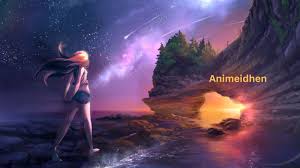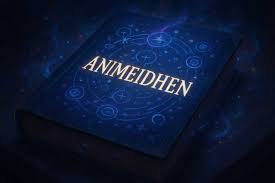Introduction
Anime has always been a window into new worlds—realms of imagination, emotion, and creativity. One of the latest sensations stirring curiosity in anime circles is Animeidhen, a term that has begun trending among fans and fantasy lovers alike. Combining elements of myth, futuristic storytelling, and emotional depth, Animeidhen has sparked discussions and fan theories about its meaning, origins, and influence. But what exactly is Animeidhen, and why is it gaining so much attention? In this article, we’ll explore the world of Animeidhen—its story, symbolism, characters, and the unique blend of art and philosophy that make it stand out in today’s anime landscape.
The Origins and Concept of Animeidhen
To understand Animeidhen, you need to start with its origins. The name itself seems to fuse “anime” with “idhen,” a word reminiscent of Gaelic or Celtic influences—possibly translating to “rebirth” or “renewal.” This linguistic choice isn’t accidental. Animeidhen’s creators appear to have drawn inspiration from both Eastern and Western mythologies, blending them into a single, emotionally charged narrative.
At its core, Animeidhen is a story about transformation—of self, society, and spirit. It follows a protagonist who awakens in a fragmented world torn between dreams and memory. The storyline isn’t linear; instead, it unfolds like a puzzle, encouraging viewers to question the nature of reality and identity.
Visually, Animeidhen stands out through its ethereal landscapes and contrasting tones—soft watercolors against dark, moody backdrops. This duality mirrors its central theme: light and darkness coexisting within every character. Much like Studio Ghibli’s symbolic storytelling or Makoto Shinkai’s emotional narratives, Animeidhen explores human fragility and the search for meaning amid chaos.
The concept resonates with audiences because it speaks to universal experiences—loss, renewal, and the hope for connection. It’s not just another fantasy series; it’s a reflection of the modern soul, wrapped in otherworldly beauty.
Storyline and Symbolism in Animeidhen

Animeidhen’s plot is layered with rich symbolism. The story begins in a decaying city called Eidha, a place where memories manifest as physical objects. The protagonist—known only as Rei—awakens with no recollection of who they are, carrying a mysterious artifact called the “Heart of Shadows.”
As Rei embarks on a journey to reclaim lost memories, the world around them morphs according to their emotions. This concept of “emotional world-building” is one of Animeidhen’s defining traits. Instead of time or magic controlling the universe, it’s human feeling—grief, love, despair, and hope—that shapes the environment.
Symbolically, Animeidhen explores dualities: creation versus destruction, memory versus oblivion, and individuality versus destiny. Each character Rei meets represents a philosophical archetype—faith, reason, desire, or regret—making the story both intimate and universal.
Critics have compared the series’ depth to that of Neon Genesis Evangelion or Erased, where metaphors play as much a role as dialogue. Animeidhen doesn’t spoon-feed meaning; it invites interpretation. Whether you view it as a psychological journey or a mythic allegory, the series rewards those who look beyond surface storytelling.
The Artistic Vision: Animation, Music, and Design
Animeidhen’s artistry is another reason it stands apart. Every frame feels intentional, blending hand-drawn charm with digital precision. The color palettes evolve with the protagonist’s growth—early episodes bathed in greys and muted blues, gradually giving way to golds, reds, and greens as Rei regains fragments of identity.
The animation style evokes works from studios like MAPPA and Kyoto Animation but with a distinct touch of surrealism. Backgrounds appear almost like oil paintings, while the character designs are minimalist yet emotionally expressive. The juxtaposition creates a dreamlike aesthetic that lingers in the viewer’s mind.
Equally mesmerizing is Animeidhen’s soundtrack. Composed by Ryo Tanaka, the score combines haunting piano melodies with orchestral crescendos, amplifying the emotional weight of key scenes. The main theme, “Eclipsed Wings,” has become iconic among fans—its lyrics exploring the pain and beauty of rebirth.
Sound design plays a storytelling role, too. The subtle hums, echoes, and silences shape the mood as effectively as dialogue. In moments of introspection, silence becomes a character of its own—a quiet reminder that not all emotions need words.
The result is an audiovisual masterpiece where every artistic choice serves the narrative’s spiritual and emotional depth.
Themes of Identity, Memory, and Rebirth

At the heart of Animeidhen lies a timeless question: Who are we when everything else fades away? Through Rei’s fragmented memories, the series explores how identity is not fixed but constantly reconstructed through choices and experiences.
Memory in Animeidhen isn’t just a record of the past—it’s a living force that binds souls together. Forgotten memories can warp into monsters, symbolizing unresolved trauma or guilt. To move forward, characters must confront these “living regrets,” offering a profound metaphor for healing and self-acceptance.
The motif of rebirth recurs throughout the narrative, often depicted through visual metaphors—cracked mirrors reforming, dying flowers blooming anew, or stars flickering back to life. These moments embody the show’s belief in resilience and transformation.
Fans interpret Animeidhen as both a coming-of-age story and a spiritual odyssey. It resonates particularly with those who’ve experienced loss or change, portraying rebirth not as an escape but as an evolution. The message is clear: even in darkness, renewal is possible. That’s what makes Animeidhen emotionally powerful and philosophically profound.
The Growing Impact of Animeidhen on Modern Culture
Despite being a relatively new title, Animeidhen has already made waves across online platforms. Social media is filled with fan art, cosplays, and philosophical discussions dissecting its every symbol. The term “Animeidhen aesthetic” has even emerged, describing a style characterized by emotional surrealism—soft hues, dreamlike imagery, and reflective storytelling.
Animeidhen’s impact goes beyond fandom culture. Critics have praised it for redefining what anime can be—a bridge between art and introspection rather than just entertainment. Its narrative encourages mindfulness, inspiring creators to explore deeper emotional themes.
The series also resonates strongly with international audiences. Subtitles and fan translations have spread across languages, building a diverse, global community united by shared fascination. Memes and edits on TikTok, Twitter (X), and Reddit have further propelled its visibility, turning Animeidhen into both a visual and emotional trend.
Moreover, the creators’ decision to include subtle LGBTQ+ undertones and non-traditional character roles reflects modern storytelling sensibilities—embracing inclusivity, identity fluidity, and emotional authenticity. In that sense, Animeidhen isn’t just a show; it’s a cultural statement about empathy and self-understanding in a fragmented world.
What Makes Animeidhen Unique Among Modern Anime

While many anime series tackle fantasy or introspection, Animeidhen distinguishes itself through its fusion of philosophy, emotion, and visual poetry. It doesn’t rely on battles or tropes to sustain interest; instead, it thrives on subtlety. Every pause, glance, and metaphor carries meaning.
Unlike mainstream action-heavy anime, Animeidhen prioritizes emotional pacing. Viewers are encouraged to feel rather than simply watch. Its world isn’t defined by magic systems or power scales but by human truths—grief, hope, connection, and rebirth.
Animeidhen’s creators have openly stated that their goal was to craft an “experience,” not just a story. And it shows. Fans describe watching it as meditative—something that stays with you long after the credits roll. It’s the kind of anime that makes you reflect on your own journey, your own forgotten memories, and what it means to start again.
That emotional resonance, combined with visual mastery and thematic depth, secures Animeidhen’s place as one of the most memorable anime experiences of recent years.
Conclusion
Animeidhen isn’t just a series—it’s a mirror into the human condition. Through its intricate storytelling, breathtaking visuals, and emotional symbolism, it reminds us of life’s cyclical nature: loss, rediscovery, and rebirth. Whether you’re drawn to its philosophical undertones, artistic brilliance, or its hauntingly beautiful soundtrack, Animeidhen offers something rare—a genuine emotional connection. In a world overflowing with fast-paced entertainment, Animeidhen stands as a quiet, luminous reminder that sometimes, the most powerful stories are the ones that help us rediscover ourselves.